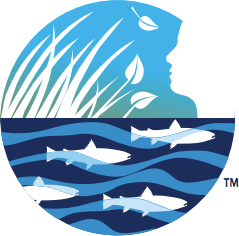Usability
“Increasingly web developers are enamored of special effects and forgo the kind of simplicity that’s key for a good customer experience. Consumers come to the web for ease of use. Take that away from them and they’re not coming back.”
– Steve Telleen, Managing Director, Website ScoreCard, Giga Information Group
We Start with the Customer
Highdive believes that a successful website is one that speaks directly to the intended audience, in a way that makes sense to them. The more in-tune a business owner is with the audience needs, the more successful the user experience will be when interfacing with an organization’s website.
If you don’t talk to your customers, how will you know how to talk to your customers?
- Where a person may feel positive about a website that is easily navigable and answers their questions quickly and easily , frustration can set in if a person cannot find something on a site (or the site does not provide the expected tools to successfully accomplish an online task).
- We know that these frustrated people are NOT dumb or incompetent, rather the website is likely not doing a good job communicating to them.
We educate business owners — through customer feedback, recommendations, and observed behaviors — about what their customers are telling them — and how they can improve.

Highdive offers services to enhance the content organization, design, and tools a visitor would use to accomplish their online goals:
Focus Group Facilitation
Usability Studies
What is the core difference?
Focus groups elicit opinions, usability tests observe behaviors.
"By 2020, customer experience will overtake price and product as the key brand differentiator."
–Customers 2020 Report
Methods
Ethnographic Research
observe society from the point of view of the user
User Testing
evaluate a product by testing it on users, observing them in real-life situations
Focus Groups
users provide perceptions, opinions, beliefs, and attitudes towards a product, service, concept
Customer Journey Map
diagram that illustrates the steps your user(s) go through in engaging with your company
Eye Tracking
test users’ responses to websites and other promotional material by watching eye movement
Card Sorting
organize topics into categories that make sense
Competitive Analysis
assessment of the strengths and weaknesses of current and potential competitors
Online Surveys
gather a host of information regarding a particular subject
A/B Testing
method of comparing two versions of a webpage or app against each other to determine which one performs better
Wireframes
visual guide that represents the skeletal framework of a website
Prototypes
early sample, model, or release of a product built to test a concept or process
Web Analytics
measurement, collection, analysis and reporting of web data for purposes of understanding and optimizing web usage
Usability Solutions
Usability Studies
With Usability Studies, we work one-on-one with website users and walk them through scripted scenarios online, observing their behaviors, successes, and failures. We then ask impressions about the website in general, and based on their experience, solicit recommendations about ways to improve it.
Includes: recruiting usability study participants from defined target audience (based on 5 participants), generating test scenarios, observing participants.
Output: usability report (trends), results of survey, prioritized website recommendations, videotapes of usability study sessions.
Focus Groups
With Focus Group Facilitation, we gather a statistically representative sample of users and have them brainstorm together to help organize website content in a way that makes sense to them, offer recommendations about functionality that would improve usability, and identify features that would make their experience a positive one.
Includes: recruiting focus group participants from defined target audience (based on 5 participants), generating questions to be answered /designs to be discussed, defining 50+ words for ranking and sorting
Output: user goals, feature recommendations (tools), content organization / sorting cluster analysis (menu), content ranking analysis (calls to action), focus group discussion summary, video tapes of focus group session
Want a free 1-hour consultation to discuss how to see your site from your customers’ perspective? Let’s chat.
User Experience Strategy Projects







